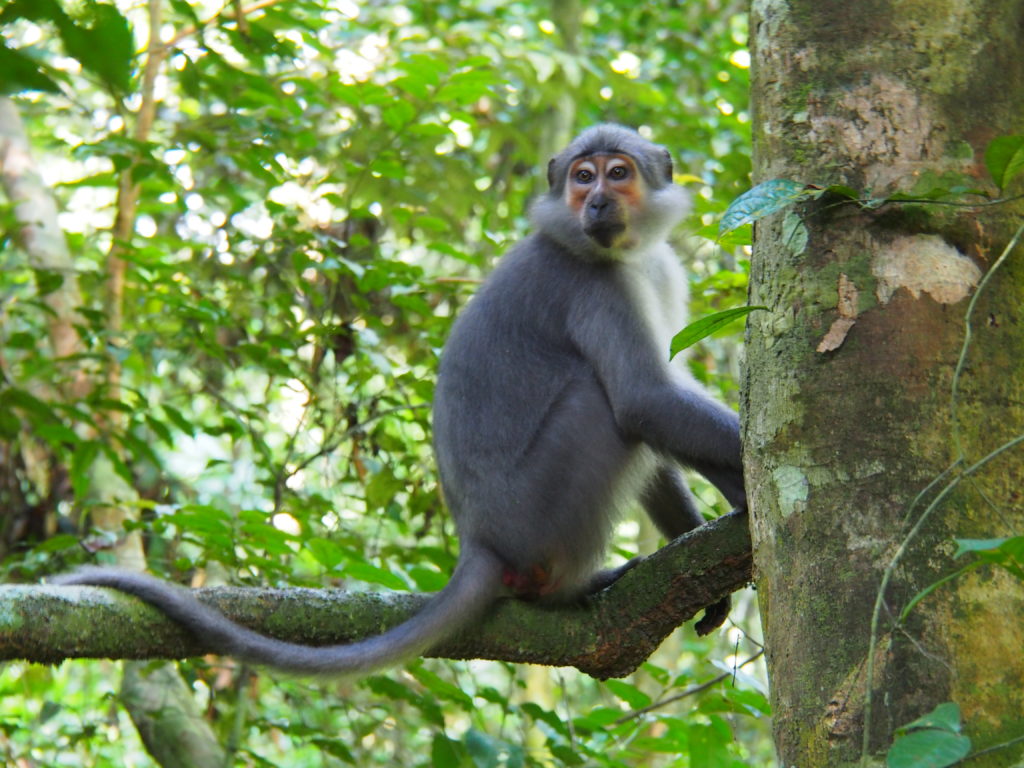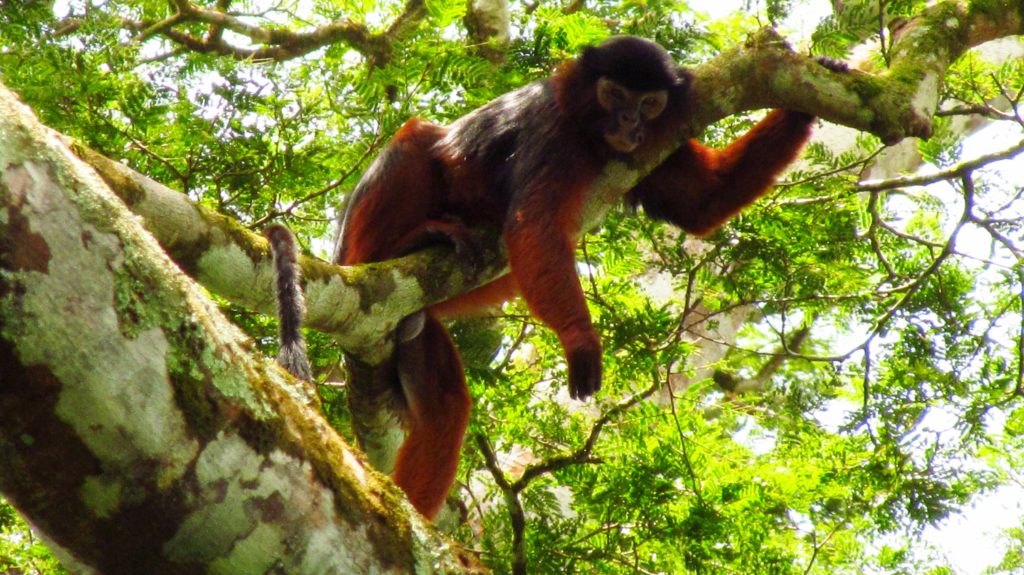Enjoy watching wild primates in Taï!
Come and enjoy the unique experience of observing habituated monkeys, such as sooty mangabeys and western red colobus monkeys in their natural habitat
Sooty mangabeys
Sooty mangabeys (Cercocebus atys) are monkeys that live in large social groups, sometimes reaching 80 individuals. They move mostly on the forest floor, searching for food; fruits, seeds, and leaves. Sooty mangabeys are listed as vulnerable on the IUCN red list of threatened species due to poaching and deforestation.
Since 2013, the habituated sooty mangabey group is followed daily by the Taï ecoguides in the heart of the Taï National Park to ensure their habituation to humans. Thus, visitors have the opportunity to observe the group, composed of ten adult males, about twenty adult females and forty juveniles and infants.

Natahi is a female of the Taï sooty mangabey group, which is habituated to human presence to allow observation by park visitors.
Western red colobus monkeys
Western red colobus (Piliocolobus badius badius) are arboreal monkeys, who mostly spend their time high in the tropical rainforest canopy. They live in social groups of up to 60 individuals. They eat young leaves, chewing them for hours. Western red colobus are listed as endangered on the IUCN red list of threatened species due to poaching and deforestation.
Since 2013, this group of western red colobus monkeys has been habituated to human presence, and ranges within a 1 km² territory in the Taï National Park, close to the ecotourism forest camp.

Baba is a male in the habituated western red colobus group, observable by tourists when visiting Taï National Park.









